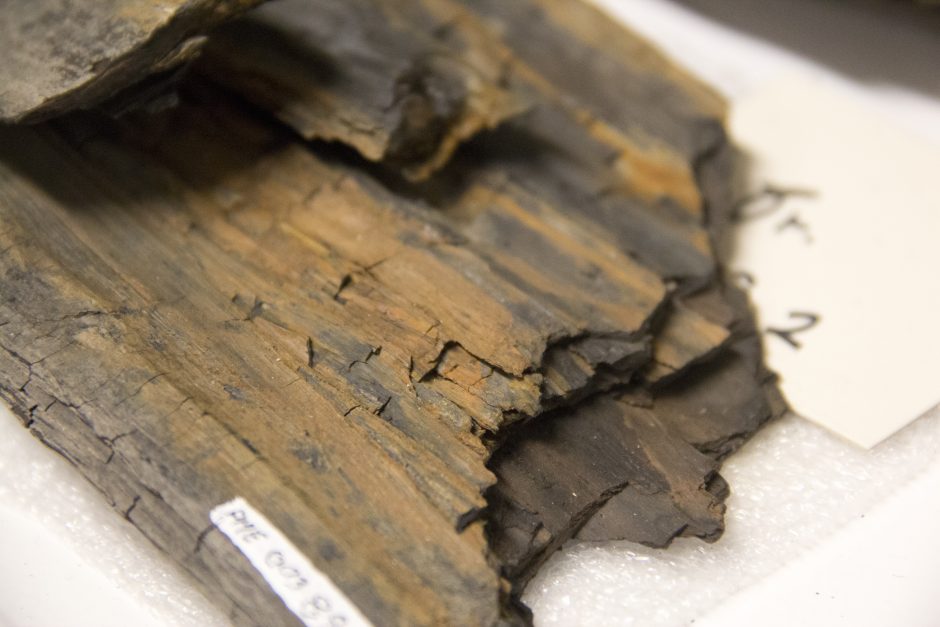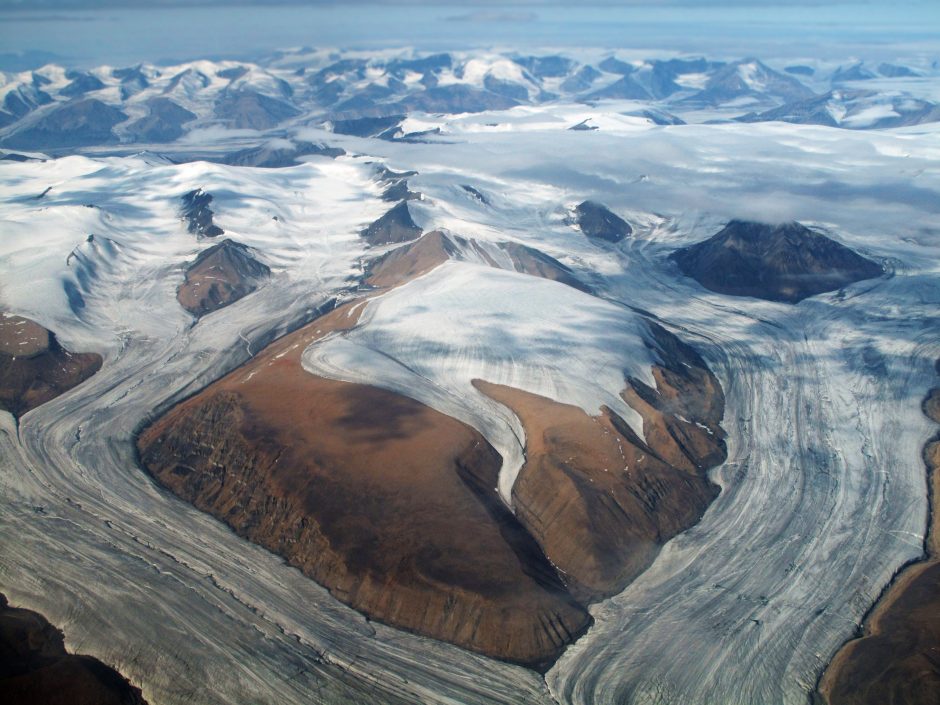
Photo Credit: Isabella Laird
The above picture is wood from a tree that grew on Axel Heiberg island, which is an island in the arctic region of Canada. It’s the wood of a Dawn Redwood (Metasequoia). How old do you think it is? 11 years old? 1000 years old? Would you believe that it’s 45 million years old?

Photo Credit: Isabella Laird
45 million years ago during the Eocene era, the world was a very different place. It was fairly warm, and at the poles, practically tropical; it would be a similar climate to today’s Florida. About 50 years ago, a fossilized forest was found on the island with wood that was so well preserved and had so much original organic material that it still could be split and burned – it may be better described as a ‘mummified forest’. Axel Heiberg island didn’t move much from the altitude that it’s at now, so we know that this forest once grew in the arctic region, which today is classified as a polar desert.
The forest was originally preserved by a “rapid burial in very fine sediments which prevented rotting and petrification”. Scientists can learn more about what the world looked like 45 million years ago from this forest, and perhaps how the future world will look.
Today, Axel Heiberg island is home to only two research bases that study climate change and what different processes on the surface of mars may be like.

Ice Cap On Axel Heiberg Island, Photo Credit: Derrick Midwinter
